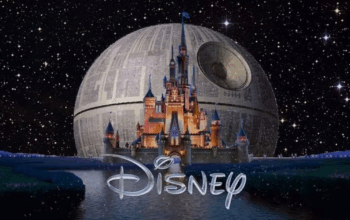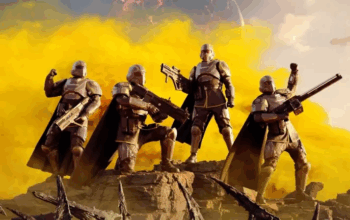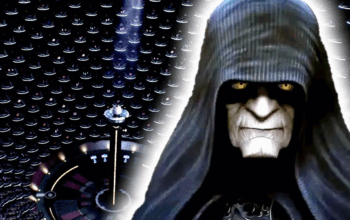
It’s no rare sight to say that in the past 13 years since Disney acquired Lucasfilm, the Star Wars franchise has fallen into a strange kind of limbo. Despite constant announcements of future films, their endless delays and cancellations have left many fans, myself included, with little confidence in Bob Iger and Kathleen Kennedy’s management.
However, one genuine positive from the Disney era has been the franchise’s expansion into television. For a long time, live-action Star Wars TV projects were withheld due to expected high costs and George Lucas’s strict creative control. While the franchise thrived in books and video games, those mediums often remained niche.
The rise of high-budget, high-quality shows like Game of Thrones, combined with The Mandalorian‘s groundbreaking use of Volume LED screen technology, opened the door for Star Wars to reach a new generation beyond just the movies. Unfortunately, the pressures of the streaming wars pushed Disney to greenlight too many projects at once, spreading resources and talent thin.
What we ended up with is a collection of Star Wars shows that range wildly in quality — some guided by seasoned filmmakers, others by first-timers still finding their footing.
For this ranking, I will not be reviewing Young Jedi Adventures (clearly made for a preschool audience), nor Tales of the Jedi or Tales of the Empire, since their anthology short format deserves a separate, focused review. Visions will also not be included, as it’s a non-canonical, experimental project outside the main continuity.
11. Star Wars Resistance

When The Clone Wars was canceled back in 2013, Lucasfilm Animation quickly entered a clear decline. Budgets were slashed, priorities shifted back toward feature films, and the studio largely detached itself from television efforts.
The most immediate problem with Star Wars Resistance is that it barely focuses on the Resistance at all. Instead, it centers on a group of racers living on a floating ocean platform turned ship as they scramble to avoid the First Order. In other words, it’s blatant false advertising.
The animation doesn’t help either. They attempted a cel-shaded, anime-inspired style, but it completely falls apart in 3D. Characters look stiff, blocky, and lifeless, with faces that boarder line uncanny. making the entire show feel visually cheap and soulless.
Resistance does absolutely nothing to flesh out the Sequel Trilogy era. Much like the Sequel Trilogy itself, the show suffers from a total lack of clear direction or purpose. It’s no wonder it was canceled after only two seasons — the narrative foundation of the Sequel era was too broken for this show to salvage anything.
Part of what made The Clone Wars and Rebels successful was how they expanded the films’ timelines. They fleshed out their respective eras, providing deeper context — whether it was the gradual corruption of the Jedi or the slow, dangerous rise of the Rebellion. Resistance had a similar opportunity: to explore the New Republic, the origins of the First Order, or Leia’s early Resistance movement. Yet it does none of that.
Its attempts at comedy is so painfully flat. Yes, Star Wars has always embraced a certain level of camp, but that’s no excuse for lazy writing.
Most of the cast are painfully one-note characters. Kaz Xiono, the protagonist, is especially frustrating — a full-grown adult who behaves like a clumsy, bumbling child. Unlike Ezra Bridger in Rebels (who at least had the excuse of being a reckless teen), Kaz’s endless hijinks feel more suited for a Saturday morning cartoon aimed at five-year-olds. And somehow, this is the guy Poe Dameron trusted to be a spy?
The side characters don’t fare much better. Neeku is a hyper-literal alien version of Drax, but with none of the charm. Tam Ryvora spends much of her time acting like a spoiled brat who eventually betrays her friends for shallow reasons. Even the Ace pilots — supposedly the elite racers — are reduced to bland stereotypes, with no meaningful arcs or growth.
The worst part? Resistance is completely forgettable. Even the other weaker Star Wars shows managed to spark something — a moment of intrigue, a flash of frustration, something memorable. Resistance sparked nothing. It simply exists, a hollow, lifeless entry in the galaxy far, far away.
10. The Book of Boba Fett
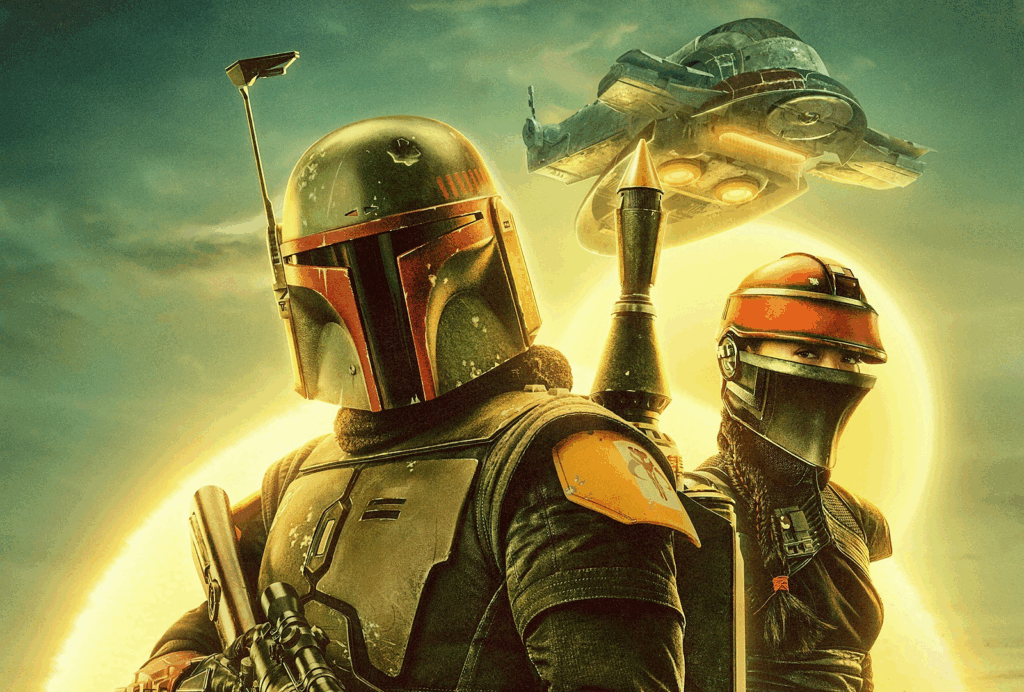
The idea of Boba Fett leaving behind his bounty hunting days to start his own crime syndicate is, on paper, a great concept. A gritty Star Wars crime thriller in the underworld, without the Jedi and Sith baggage, could’ve been something special — something like The Penguin series. (Ironically, The Penguin ended up doing this idea way better.)
Unfortunately, The Book of Boba Fett completely drops the ball.
Most of the side characters are there just to chew scenery. The infamous “Mod gang” — those shiny, spotless biker kids — feel laughably out of place. Their polished scooters clash so hard with the dusty, grimy streets of Tatooine that it feels more like Spy Kids than Star Wars. Considering Robert Rodriguez was involved, that might explain it.
The show also has a serious structural problem. The first half is flashback-heavy, focusing on how Boba survived the Sarlacc pit and found temporary peace with the Tuskens. To its credit, that’s easily the best part of the show. It adds real depth to the Tusken Raiders and gives Boba an arc rooted in survival, loss, and cultural assimilation. But once those flashbacks end, the story shifts to his war with the Pykes — and then it completely derails.
Halfway through, the show turns into The Mandalorian Season 2.5. Boba himself gets sidelined in his own series.
The villains are a mess too. First, it seems the Hutts will be the main threat. Then they’re abruptly written out and replaced with the dull Pykes. Cad Bane shows up at the very end as a last-minute surprise villain — a character whose significance relies entirely on viewers having watched deleted Clone Wars arcs. That’s not great storytelling.
Temuera Morrison deserved better. The man who played both Jango and Boba Fett is reduced to a passive bystander in his own narrative. For a series bearing his name, Boba spends a shocking amount of time offscreen or taking a backseat.
But the show’s worst offense? Robbing The Mandalorian of its emotional payoff. The heartfelt goodbye between Din and Grogu at the end of Mando Season 2 was a beautiful, bittersweet conclusion. And then Book of Boba Fett undoes it just a few episodes later — not even in Mando’s own show. The reunion feels rushed, unearned, and cheap. That moment should have been saved for The Mandalorian Season 3.
To be fair, there are a few highlights. The flashbacks with the Tuskens are genuinely well-done. They offer character growth and worldbuilding that deepen our understanding of Tatooine and Boba himself. If the whole series had stayed in that tone — mythic, grounded, introspective — it could have worked.
Out of all four Star Wars shows released in 2022, this was easily the weakest.
Surprisingly though, it’s not my most hated Star Wars series. Why? Because Boba Fett was never that deep to begin with. He was always more icon than character — a cool helmet and a few lines. As bad as this show was, it feels more like a bunch of half-baked ideas than a complete disaster. It’s frustrating, but not soul-crushing.
That said, The Book of Boba Fett is another example of Disney’s odd habit of trying to “hero-wash” every iconic villain. Boba Fett was supposed to be the galaxy’s deadliest mercenary. You can’t rule a criminal empire by being the nicest guy in town.
9. Obi-Wan Kenobi
The most frustrating show of the Disney Star Wars era — because it had the most potential.

Of all the Star Wars series under Disney, Obi-Wan Kenobi might be the most infuriating — not because it’s the worst made (that title still belongs to The Book of Boba Fett), but because of how deeply it misunderstands the story it should be telling.
Kenobi’s post-Revenge of the Sith arc should’ve been small, intimate, and tragic. His entire purpose after Order 66 was clear: live in hiding, watch over Luke from a distance, and wrestle with guilt, loss, and fading hope. Instead, Disney drags him out of exile for a bloated, galaxy-hopping adventure that breaks canon, sidelines its own lead, and crams in subplots that add nothing.
Worst of all, Obi-Wan becomes a side character in his own show.
The writers shift focus onto characters that simply don’t work — especially Reva, an Inquisitor so poorly written it’s baffling. We’re shown her as a violent, unstable zealot who commits atrocities… yet we’re expected to forgive her because of a brief flashback. The show never develops her backstory, never earns our sympathy, and still tries to shoehorn in a redemption arc. It’s manipulative writing that wants the payoff without doing the work.
Then there’s Leia. While a young Leia could work in theory, here it feels completely forced. She’s constantly outsmarting adults, escaping bounty hunters, and forming an implausibly deep bond with Kenobi. Not only is it ridiculous — it directly contradicts A New Hope, where Leia barely seems to know Obi-Wan beyond reputation. This isn’t clever fan service; it’s sloppy retrofitting.
The bias in screen time is obvious. Leia dominates the series, while Luke — the child Obi-Wan was literally meant to protect — is relegated to a footnote. It’s hard not to feel like this was more about pandering than storytelling. If this series was ever meant to explore Kenobi’s burden and his connection to Luke, that idea got completely lost.
Even Vader, who should be terrifying, ends up looking dumb. In one scene, he extinguishes a fire to reach Obi-Wan… then just lets him escape when the fire reignites seconds later. In another, he rips one ship from the sky but can’t be bothered to try the same thing with the actual escape ship. And after Reva attempts to kill him, he just walks away and leaves her alive. This isn’t the cold, merciless Vader we know. This is plot armor at its worst.
And then there’s the lightsaber problem. Characters are stabbed — multiple times — and just shrug it off. When lightsaber wounds no longer carry weight, the stakes vanish. Even Obi-Wan is shown casually swinging at Stormtroopers like he’s holding a wiffle bat. There’s no gravity to the action.
Much of the series feels like it’s ripping off Jedi: Fallen Order — but without the pacing, emotion, or payoff. It’s a stitched-together patchwork of better stories, presented with less care.
The third act is where it all falls apart. Plot holes multiply. Logic breaks down. And everything seems to be rushing toward a finish line without asking if any of it makes sense. It doesn’t just break canon — it breaks immersion and basic storytelling structure.
And yet… Ewan McGregor tries. He’s the one saving grace. You can see how much he wants to explore Obi-Wan’s pain, his guilt, his fading connection to the Force. There are flashes — brief moments — where it almost works. But the script never gives him the space to make it matter.
Obi-Wan Kenobi squandered its entire reason to exist. It could have been a quiet tale of exile, survival, and redemption. Instead, it’s a clumsy, overstuffed mess that misunderstands its core character and actively undermines the franchise’s legacy. For all its faults, The Book of Boba Fett was mostly self-contained. This? This pretends to be important — but doesn’t earn a second of it.
8. The Acolyte
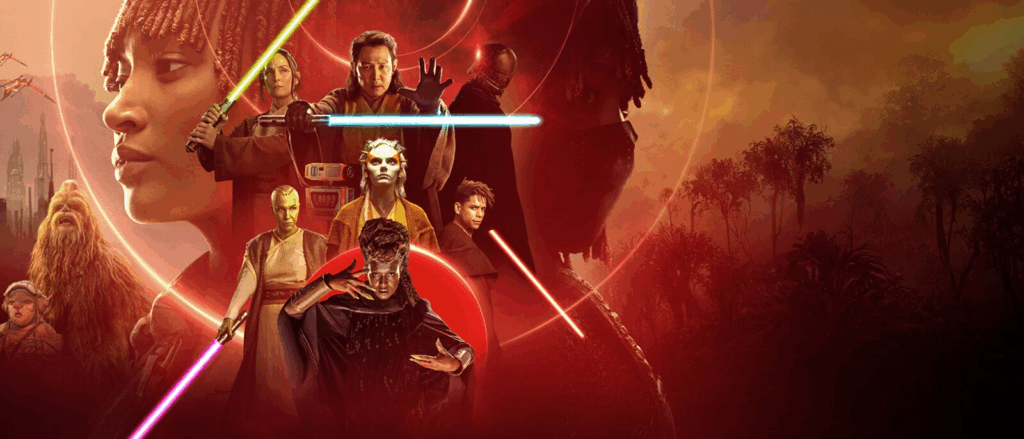
While not as offensively bad as some of the shows ranked lower, The Acolyte still fails as a show on a fundamental level. I’ve already outlined its biggest issues in another article — the lack of a real mystery, terrible character arcs that get worse as the story drags on, and major mishandling of its core themes. There’s simply too much wrong with it, and not enough positives to balance things out.
The acting is another major problem. I understand that the actors playing Jedi were likely instructed to be stoic and detached, but most of them just come across as wooden and lifeless — with the sole exception of Sol, who at least manages to inject some humanity into his performance.
Visually, the show looks offensively cheap — not in its costumes or effects necessarily, but in its sets. Despite its massive $180 million budget, The Acolyte often looks like it cost a third of that. So many sets feel small, cramped, and lifeless. There’s no sense of grandeur, no feeling that this is a “galaxy far, far away.” It’s most obvious in the Jedi Temple, which in the Prequels was portrayed with breathtaking scope and size — here, it’s reduced to a series of bland, overcrowded hallways.
The only true bright spots are Sol and Qimir — with Qimir especially standing out as an interesting villain who actually deserved his own spinoff. The rest of the characters are wasted. They introduce the first live-action Wookiee Jedi — only to immediately sideline him in the dumbest way possible. And no, him getting “possessed” by witches doesn’t count. At least Boba Fett’s Wookiee got to rip a guy’s arm off.
Then you get the ending which makes no sense whatsoever. The reasoning for why the Sith remained hidden is beyond ridiculous because of a Jedi coverup for no explained reason. You can practically feel the writers scrambling to write themselves out of a corner they had no real plan for.
I will give The Acolyte credit where it’s due: the lightsaber fights are actually well-choreographed. Finally, they hired people who understand how to stage proper combat scenes and kept the camera steady during the action.But in the end, a few decent fights and two good characters aren’t enough to save this massive lost opportunity. The Acolyte was supposed to push Star Wars beyond the Skywalker Saga, which explored new eras and new ideas. Instead, as I said before, this is what happens when an inexperienced fan—not a true filmmaker-is — is given the keys to the galaxy.
Still, despite of my issues, of all the Bad Star Wars listed thus far, this one was the least bad. It almost works. But unfortunately, it’s on the bad list for a reason.

